Saffron (Kesar) Uses, Research, Remedies, Side Effects, Ayurvedic Medicines
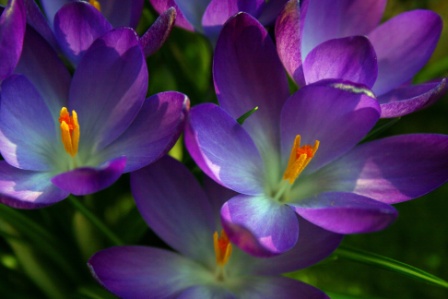
Kumkum – Crocus sativus is an Ayurvedic herb used for the treatment of acne, black head, diarrhea, skin diseases, impotence and acts as immunity enhancer and memory booster.
Latin name- Crocus sativus Linn.
Family- Iridaceae (Kesara Kula)

Table of Contents
Properties, part used, dosage
Medicinal properties of Kesar – Saffron:
Rasa (Taste) – Katu (Pungent), Tikta (Bitter)
Guna (Qualities) – Snigdha (Slimy)
Vipaka – Katu (Undergoes pungent taste after digestion)
Veerya (Potency) – Ushna (Hot)
Karma (Actions) – Tridoshahara (reduces all the vitiated doshas )
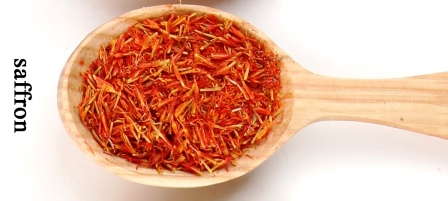
Part used- Stigma/ Stamen
Dosage-
Powder- 0.5 to 1 g
Chemical composition
Chemical composition of Crocus sativus:
Saffron contains a volatile oil composed of terpenes, terpene alcohols and esters. The herb also contains crocin, picrocrocin, crocetin, carotenoids and ribo?avin and thiamine.
Adulterants
Carthamus tinctorius
Collection
The plants are raised from corms planted during July or August. The flowering takes about one year. Flowers are collected in the early morning in November and December, Stigma and Upper style portions are detached manually and the drug is dried by artificial heat and stored in dry place.
Uses, Indications
Uses of Kumkum – Saffron:
- The powder of Saffron is mixed with milk or honey and is consumed to improve the complexion of the skin.
- The paste of the saffron is applied over the area affected with black head, pimples and skin discoloration.
- Kumkum powder is mixed with either milk or sugar candy and consumed to improve sexual vigor and as part of treatment in impotency, lack of libido and erectile dysfunction.
- Crocus sativus powder is given along with Dashamoola lehya during the post- partum period for improving the strength of uterine muscles.
- Regular consumption of Kumkum powder along with ghee or milk act as a memory booster and improves the immunity.
- Crocus sativus powder is given with powder of Shunti (Ginger) and decoction of Dashamoola to relieve joint pain and fever.
- Saffron paste is applied over the forehead to relieve headache.
- Paste of turmeric and saffron is applied over wounds and pustules as part of treatment.
- Saffron is used world -wide in many cuisines and desserts.
Saffron during pregnancy
Uses as per Ayurveda:
Varnya – Improves skin tone and complexion
Kantida – improves skin tone and complexion
Vrana Shodhana – cleanses and disinfects wounds
Doshatrayahara – Balances all the three Doshas
Indicated in –
Hikka – hiccups
Shiroroga – diseases of head, headache
Vami – vomiting
Krumi – worm infestation
Drushtiroga – vision disorders, eye diseases
Visha – Toxic conditions, poisoning
Vyanga – Freckles, melasma
Kasa – Cough, disorders of throat
Varnya – Improves complexion
Deepana – Stimulates digestive fire
Sanskrit verse
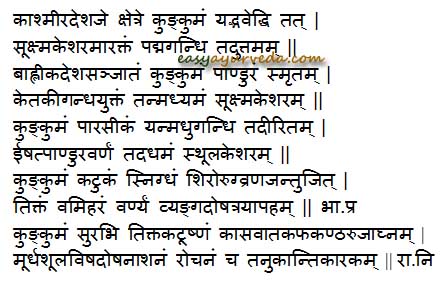
Depression and mood
96. Why is saffron milk given on the first night?
Saffron is the ancient Ayurvedic spice used for relieving headache, depression, freckles, acne, abdominal pain during menstruation, heavy periods etc.
In Hindu custom, after marriage, on the first night, the newly wed couple are given a cup of milk mixed with saffron. There are scientific reasons for this.
Saffron is known to elevate mood in healthy adults. It is proven with 4 weeks, double-blind, parallel, randomized, placebo-controlled clinical trial (1)
Saffron is also useful to relieve depression. It works against depression by improving serotonin. In fact, a systematic review of six studies that involved placebo-comparison trials, demonstrated that saffron has similar effect on depression, compared to modern antidepressants. It is due to its serotogenic, antioxidant, anti-inflammatory, neuro-endocrine and neuroprotective effects. (2) It means, in case of depression, the chemicals that transfer signals from one brain / nerve cell to the other are afflicted. Saffron boosts these chemicals and ensures proper signal conduction, thereby relieving depression.
So, now we know that saffron elevates mood and relieves depression. Hence, it is given on the first night so that the newly married can feel relaxed and elated without depression or anxiety ?
Saffron is also administered in and around menstruation. This is useful to avoid foggy mood and depression and also to check excessive menstrual bleeding (menorrhagia). For this, 1-2 strands of saffron are given mixed with a teaspoon of honey after food.
Even the smell of saffron is useful in menstrual distress. A study found supportive evidence of physiological and psychological effects of saffron odor in women. This is useful in treating PMS, dysmenorrhea (painful menstruation) and irregular menstruation (3)
Saffron infused ghee is used for Ayurvedic Nasya therapy (nasal instillation of drops) to treat migraine.
How to consume? 1 – 2 strands of saffron sprinkle over your favorite dishes, or consume saffron added to milk. You can also take it with honey or ghee.
Taking saffron mixed with honey is good for Kapha disorders – weak digestion, obesity, depressed mood.
Saffron with ghee is useful in Pitta disorders – burning sensation, heavy periods, skin health, glow, freckles.
Saffron with milk is useful in Vata disorders – muscle aches, pains, anxiety, abdominal pain, cramps.
I have a saffron allergy. Whenever I take even a strand, I get allergic hives on my skin. Can I apply Kumkumadi taila?
Answer:
Kumkumadi taila is an Ayurvedic oil containing Saffron as the main ingredient. It is used to improve skin complexion and acne (read more about kumkumadi oil). Though you have an allergy to oral intake of saffron, my best guess is, you should be able to tolerate its external application in the form of oil. However, to be on the safer side, take 3 drops of Kumkumadi oil and apply it on your inner side of your forearm. Wait for 10 minutes. Watch out for allergic reactions, redness, rashes, itching etc. If there are no such symptoms, it is safe to say that you are not allergic to external application of kumkumadi oil.
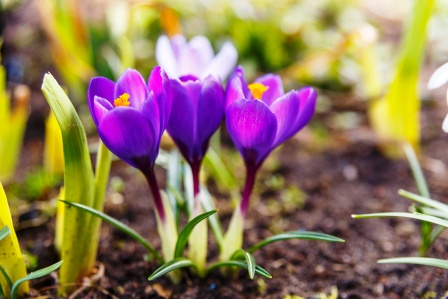
Varieties of Saffron
Bh P Ni – 3 types
Kashmira
Balhika
Parasika
Ra. Ni – Kumkuma and Trina Kumkuma
Market sample – Mograa and Laccha
Saffron with thin strands, grown in Kashmir, Padmagandhi – having the fragrance of lotus, is the best variety.
Bigger strands, which look like a creeper is of moderate quality
Parasika Kumkuma –
Slightly white, rough to touch, thick strands, Madhugandhi – having the smell of honey.
Bahlika Saffron – from Punjab area, with tiny strands, white colour, with fragrance of flower of Ketaki (Kevda flower), is of medium quality
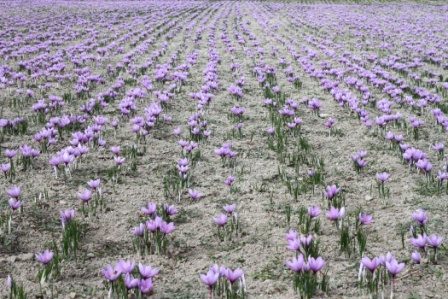
Adverse effect
There is no adverse effect known or reported after the normal use of Kumkuma.
Interaction with medicines, supplements
Can this be used while taking Homeopathic medicine?
Yes. This product does not react with homeopathic medicine.
Can this medicine be continued while taking supplements like multivitamin tablets, Omega 3 fatty acids etc?
Yes. Generally, this product goes well with most dietary supplements. However, if you are taking more than one product per day, please consult your doctor for an opinion.
With western medicines
Seek your doctor’s advice if you are taking this product along with other western (allopathic / modern) medicines. Some Ayurvedic herbs can interact with modern medicine.
If both Ayurvedic and allopathic medicines are advised together, then it is best to take Allopathic medicine first, wait for 30 minutes and then take the Ayurvedic medicine.
Does Saffron benefit the liver?
Ayurvedic medicines
Ayurvedic medicines containing Saffron:
Pushyanuga choorna: This is a medicine in powder form used for the treatment of Menorrhagia, Metrorrhagia, Leucorrhoea, Menstrual disorder, Excessive menstrual bleeding of various etiology. It is also used in treating uterine infections and Hemorrhoids.
Nagavallabha Rasa: It is a medicine used in the treatment of diabetes, cough, asthma, etc. It is traditionally administered along with honey, fresh ginger juice, and betel leaf juice.
Yakuti Rasa: Yakuti Ras is an Ayurvedic medicine in tablet form, used in the treatment of cardiac disorders, chronic fever and excessive sweating.
Kachuradi choorna: Kachuradi Choornam is an Ayurvedic medicine used to apply externally to relieve headache, burning sensation, dizziness and to treat insomnia.
Patrangasava: It is a medicine used mainly in gynecological conditions such as heavy menstrual bleeding, leucorrhea, fever, anemia, inflammatory conditions, low digestion power and anorexia.
Madana Kameshwari lehya: It is used in aphrodisiac treatment. It helps to improve sperm count, improves sperm and semen quality and quantity.
Nisoshiradi Taila: It is an effective Ayurvedic herbal oil used to treat diabetes carbuncles and abscesses.
Asana Eladi Taila: It is used in the Ayurvedic treatment of headache, ear and eye diseases. It is used externally for application.
Vajeekarana Capsule: It is a proprietary Ayurvedic medicine used in the treatment of lack of vigor and strength etc.
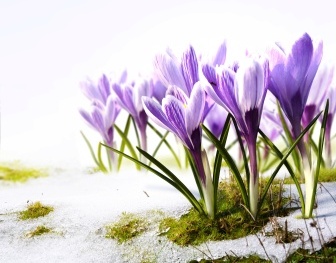
Memocap capsule: It is a proprietary Ayurvedic medicine used as an effective Ayurvedic nervine and memory tonic, improves analytical ability and memory power.
Research
Research articles related to Crocus sativus:
Action on nervous system: In the present article, the effects of C. sativus and its constituents on the nervous system and the possible underlying mechanisms are reviewed. Our literature review showed that C. sativus and its components can be considered as promising agents in the treatment of nervous system disorders.
Action on memory related disorder: We critically review advances in research of these emerging molecular targets for the treatment of memory disorders, and discuss their advantages over currently used cognitive enhancers as well remaining challenges. Current analysis has shown that C. sativus and its components might be a promising target for cognition impairments.
Cancer chemo-prevention: Anticancer treatments such as anthracyclines, though effective, induce cardiotoxicity by releasing radical oxygen species (ROS). Saffron perfused during electrolysis helps trap ROS and appreciably recovers myocardial function; however, saffron was less effective against Doxo, thus suggesting that mechanisms other than oxidative stress underlie Doxo cardio toxicity.
Skin depigmentation activity: The antioxidant activity of C. sativus extract was determined using the DPPH method. Water in oil (w/o) topical cream of C. sativus extract (3 %) was formulated and compared with the base (cream without extract). Both creams (formulation and base) were applied to the cheeks of 10 healthy human volunteers for a period of 8 weeks. Application of the formulation containing 3 % C. sativus extract to human skin may be useful in the management of melanoma.
The effect of extracts against acute inflammation was studied using xylene induced ear edema in mice. The activity of the extracts against chronic inflammation was assessed by formalin-induced edema in the rat paw. We used aqueous and ethanolic maceration extracts of Crocus sativus L. stigma and petals. In chronic inflammation, both aqueous and ethanolic stigma extracts, as well as ethanolic petal extract, exerted anti-inflammatory effects.
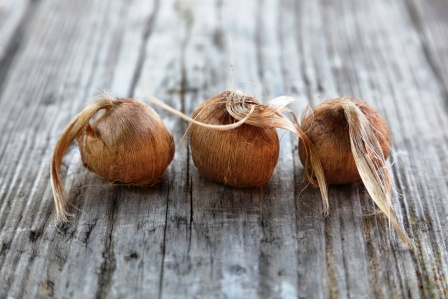
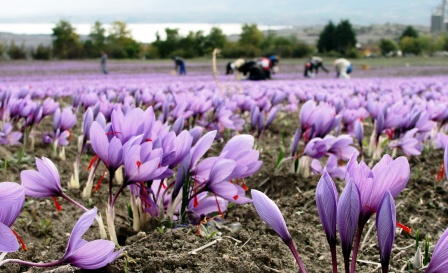
Classical categorization
Bhavaprakasha- Karpooradi varga
Dhanvantari Nighantu- Chandanadi varga
Kaiyyadeva Nighantu- Oushadhi varga
Shodala Nighantu- Chandanadi varga
Raja Nighantu- Chandanadi varga
Scientific classification
Kingdom: Plantae
Order: Asparagales
Family: Iridaceae
Subfamily: Crocoideae
Genus: Crocus
Species: C. sativus
Vernacular names
Saffron – names in different languages:
Hindi name- Kesar
English name- Saffron
Arabic name- Jafran
Bengali name- Jafran, Kumkum
Guajarati name- Kesar
Kannada name- Kesar
Marathi name- Kesar
Tamil name- Kumkumappu
Telugu name- Kumkuma pubba
Morphology
Morphology of Crocus sativus
Kukmum is a small herb growing to a height of 6-10 inches. The leaves have long lines in them.
The plant has a corm, which holds leaves, bracts, bracteole, and the flowering stalk. These are protected by the corm underground. The plant generally blooms with purple flowers in the autumn. The flowers have a good fragrance with the stigma having a reddish orange color. These are collected and dried properly to be marketed as saffron. The fruits are small and round. The plant is a native of southern Europe and Iran. In India it is cultivated in Kashmir.
Sanskrit Synonyms
Kashmira – Grows/ cultivated in Kashmir
Shonitabidha, Rakta, Rudhira- The inside of the flower and stigma is red in color
Peetaka – yellow strands
Vara – a great spice / herb
Charu – beautiful
Varnya – improves complexion
Agni Shikha, Shika – saffron coloured strands, resembling the colour of fire
Bahlik, Kumkuma,
Pishuna – Has strong odour
Sankocha, Ghusruna
Author:
Dr.B.K.Prashanth M.D (Ayu), Ph.D
E mail: [email protected]
Click to consult Dr Prashanth BK
Sthanika Karma (Systemic Action)
External Application – Improve complexion, Reduce swelling (sothahara), indicated in skin conditions like discoloration on face (Nyacha, vyanga), headache, scars, In eye disorders (Drushti daurbalya) (Along with rose water) it an be used externally.
Internal administration-
Nervous system – It has Analgesic effect. Stimulates the nervous system. overdose can cause hallucinations. For migraine it is indicated along with sugar and ghee. indicated in Amavata (Rheumatic joint complaints).
Digestive System – Carminative, digestant, absorbent, and indicated in vomiting, liver stimulant. Indicated in diarrhea, anorexia, indigestion etc.
Circulatory System – Purify blood
Excretory System – diuretic. Indicated in painful micturition
Reproductive system – Aphrodisiac, stimulates the uterus. Indicated in dysmenorrhea, delayed menstruation, delayed labor.
Satmikarana – Indicated in general weakness.
Tvak (Skin) – Stimulate sweat gland, promote complexion
Tapakrama – Indicated in fever











13 comments
Sai
Dear Doctor,
Can Saffron be consumed by all everyday. ?? I am 52 male…How will it benefit me at this age…
Smita Kumar
How can one use it effectively daily?
vikram
can one small strand of kesar consumed daily
vikram
thank you dr
PI
Dear Dr.,
How much saffron can pregnant women consume everyday? My grandmother has asked me to drink saffron milk every night. I am completing six months of pregnancy and have started drinking quarter glass of warm milk with 2-3 strands of saffron, after grinding it in the milk. Is this too much?
Thank you.
Dr J V Hebbar MD(Ayu)Author
Half a strand per day is good enough.
Dr J V Hebbar MD(Ayu)Author
Welcome 🙂
SS
can saffron help with depression and/or anxiety? if so, how should one consume
Vidhya Rao
Does Saffron help hair and scalp?
Dr J V Hebbar MD(Ayu)Author
Yes.
s
yes 13 strands
Chinmaya Hota
What should be the doses of kesar for infants and adults for daily use in milk?
Dr J V Hebbar MD(Ayu)Author
For an infant above 9 months old, just a small piece of strand, ground in milk.